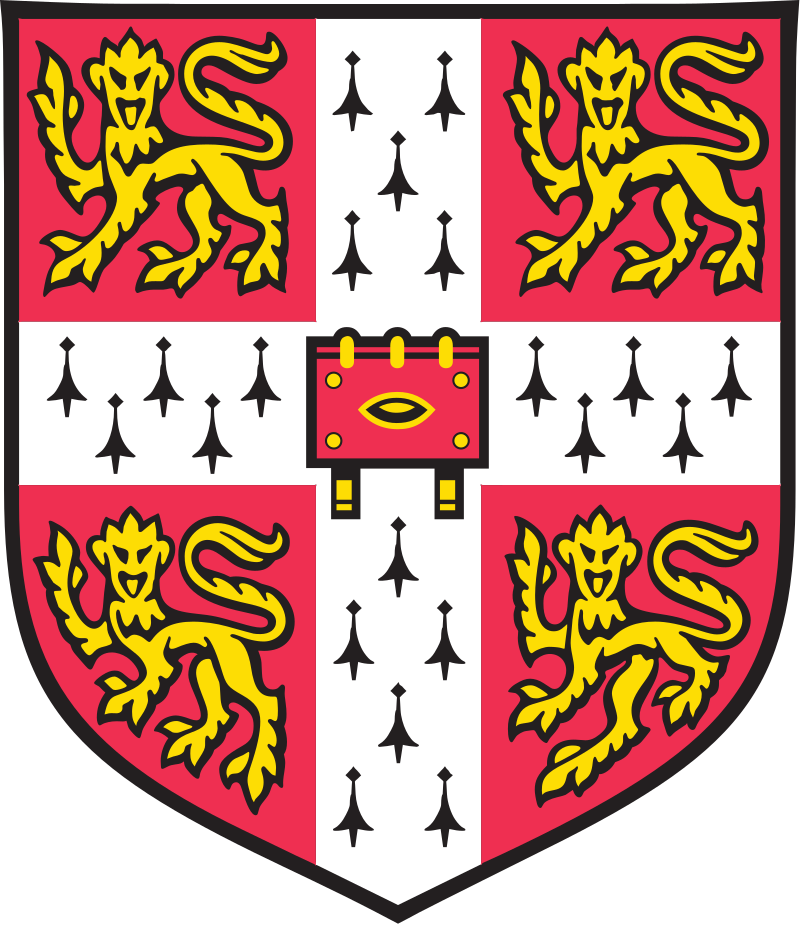The University of Cambridge, founded in 1209, is the second-oldest English-language university in the world after Oxford. I visited on a cold and dreary day while on a day trip from London and explored the parts of the campus open to the public. I walked along thoroughfares, down alleys, and across bridges over the River Cam taking in the stone, brick, and wood buildings. The architecture in Cambridge is stunning and represents three quarters of a millennium of symbiotic university and city development.
Hinc lucem et pocula sacra
University of Cambridge’s motto
English Translation
Literal: From here, light and sacred draughts.
Non-literal: From this place, we gain enlightenment and precious knowledge.
The university’s coat of arms were officially granted in 1573. The coat of arms and the blazon, or heraldic description, are below:

Gules on a Cross Ermine between four Lions passant guardant Or a Bible fesswise Gules clasped and garnished Or the clasps in base.
On a red background, a cross of ermine fur between four gold lions walking but with one fore-leg raised, and facing the observer. These lions must always face the left-hand edge of the page or item on which the arms are displayed (which means they are facing right, heraldically speaking). On the centre of the cross is a closed book with its spine horizontal and with clasps and decoration, the clasps pointing downward.
The golden lions represent Cambridge’s royal patronage and the cross and Bible represent Christianity. The Bible could also be interpreted as just a book, representing knowledge. Ermine is a “fur” or tincture; the white background represents the winter coat of the stoat, or weasel, while the black pattern references it’s tail. Twenty-one weasels were metaphorically harmed in the making of this coat of arms.
UNIVERSITY OF CAMBRIDGE

Coat of arms description and motto from University of Cambridge Brand Resources: https://www.cam.ac.uk/brand-resources/about-the-logo/the-coat-of-arms